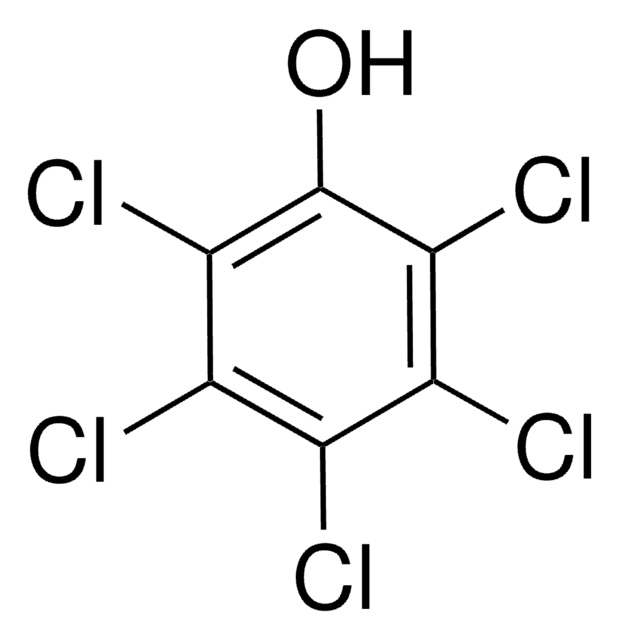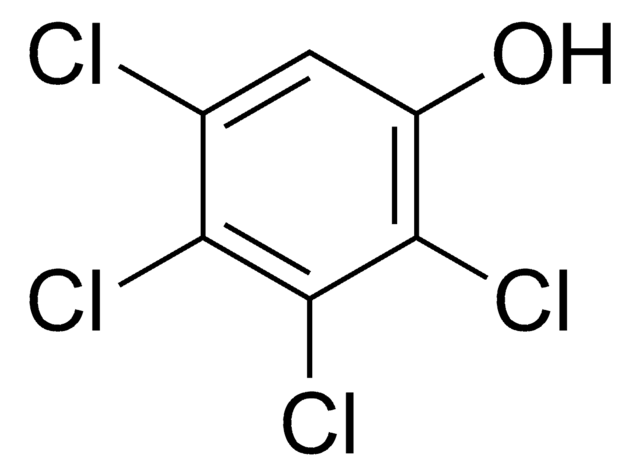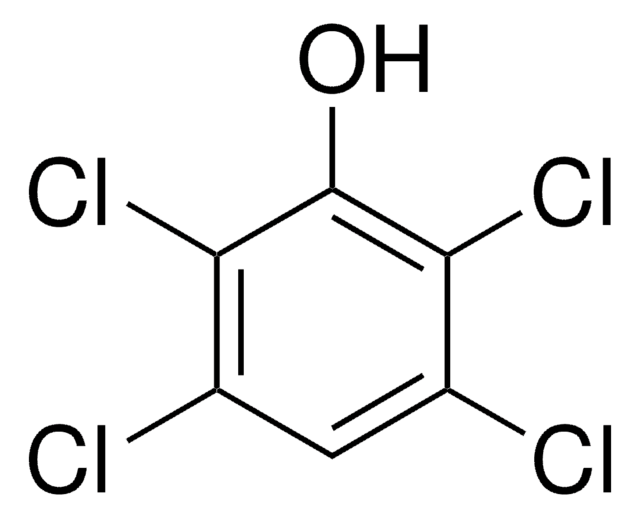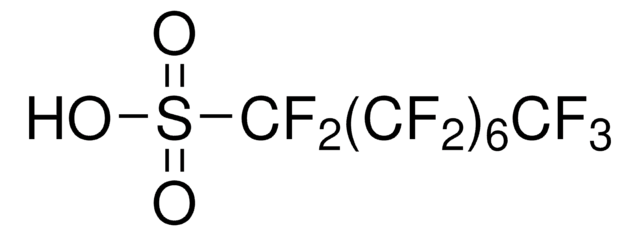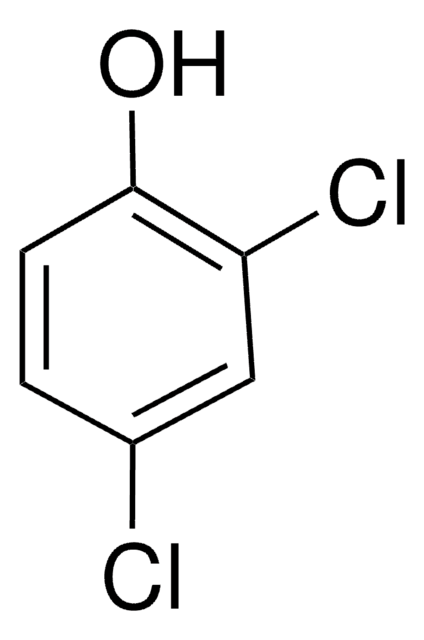P2604
Pentachlorophenol
97%
Sinônimo(s):
1-Hydroxy-2,3,4,5,6-pentachlorobenzene, 1-Hydroxypentachlorobenzene, 2,3,4,5,6-Pentachlorophenol
About This Item
Produtos recomendados
densidade de vapor
9.2 (vs air)
Nível de qualidade
pressão de vapor
40 mmHg ( 211.2 °C)
Ensaio
97%
Formulário
powder or chunks
p.e.
310 °C (lit.)
pf
165-180 °C (lit.)
densidade
1.978 g/mL at 25 °C (lit.)
cadeia de caracteres SMILES
Oc1c(Cl)c(Cl)c(Cl)c(Cl)c1Cl
InChI
1S/C6HCl5O/c7-1-2(8)4(10)6(12)5(11)3(1)9/h12H
chave InChI
IZUPBVBPLAPZRR-UHFFFAOYSA-N
Procurando produtos similares? Visita Guia de comparação de produtos
Categorias relacionadas
Palavra indicadora
Danger
Frases de perigo
Declarações de precaução
Classificações de perigo
Acute Tox. 2 Inhalation - Acute Tox. 3 Dermal - Acute Tox. 3 Oral - Aquatic Acute 1 - Aquatic Chronic 1 - Carc. 2 - Eye Irrit. 2 - Skin Irrit. 2 - STOT SE 3
Órgãos-alvo
Respiratory system
Código de classe de armazenamento
6.1A - Combustible acute toxic Cat. 1 and 2 / very toxic hazardous materials
Classe de risco de água (WGK)
WGK 3
Escolha uma das versões mais recentes:
Já possui este produto?
Encontre a documentação dos produtos que você adquiriu recentemente na biblioteca de documentos.
Nossa equipe de cientistas tem experiência em todas as áreas de pesquisa, incluindo Life Sciences, ciência de materiais, síntese química, cromatografia, química analítica e muitas outras.
Entre em contato com a assistência técnica